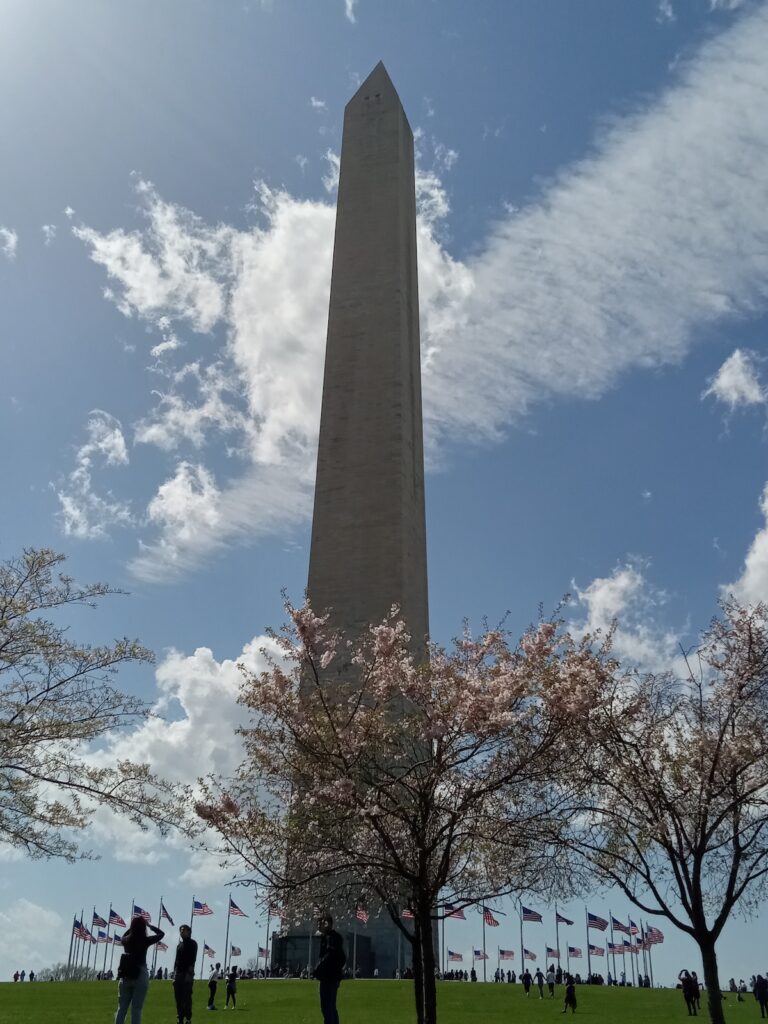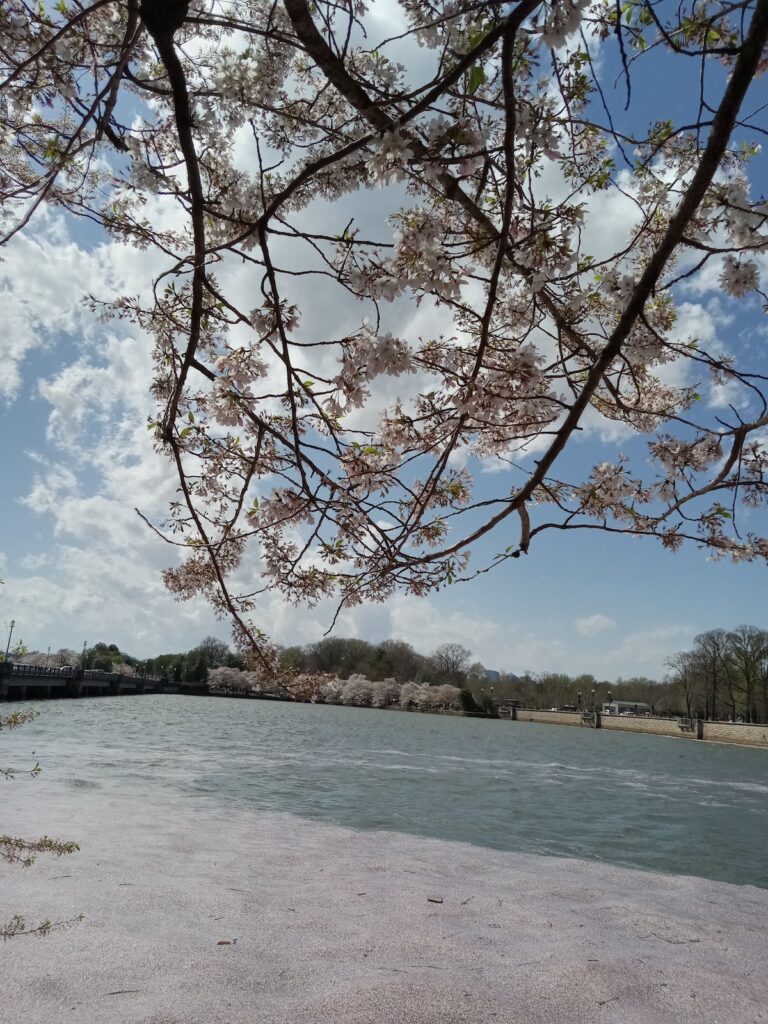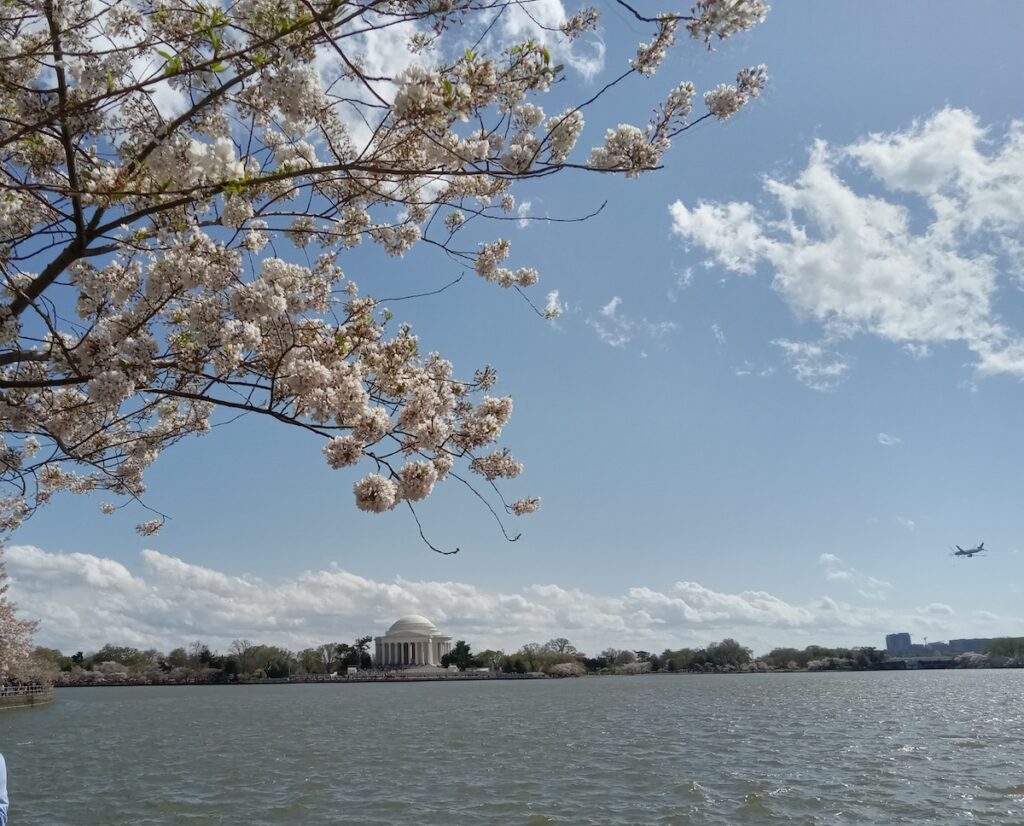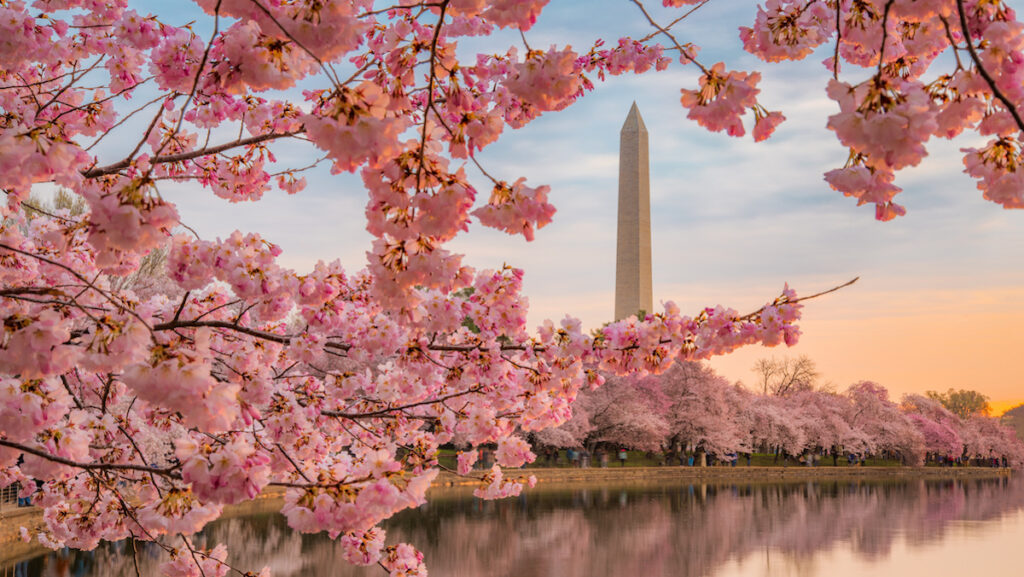March and April 2023 were celebrated as the 111th bloom of Japanese varieties of cherry trees across our nation’s capital city, with an estimated 1.5 million tourists flocking to the annual Cherry Blossom Festival in the Tidal Basin of West Potomac Park.
But how these trees arrived and survived is a story with more twists and turns than you may have expected. (Although perhaps not quite as dramatic as episode 49 of The Twilight Zone, where the cherry trees serve as a cue about which year one unfortunate time-traveling protagonist is in at different parts of the story. This is how I personally learned about these pretty pink blossoms, and that they were around in the 1960s but not the 1860s.)
The plants in question are mostly Yoshino trees, a cultivated type of cherry tree developed in Japan in 1870, though a small number are the Akebono variety, and some others. When in bloom, these trees give the District of Columbia an ethereal, almost otherwordly beauty. Still, those million-and-a-half tourists may not know that it took dozens of people, an infestation, a controlled burn, a second crop, and the scientific method to arrive at the cherry blossoms famous in Washington D.C. today.

History of the Washington, D.C. Cherry Blossom Trees: It Takes a Village (Made of Very Well-connected Individuals)
Here is a breakdown of some of the players, both American and Japanese, who worked for decades to see thousands of Japanese cherry trees planted in Washington, D.C. as a token of goodwill between nations:
- Eliza Scidmore was an American travel writer who admired the cherry blossom trees she observed in Tokyo while visiting her brother, a diplomat. In 1909, she gave herself the mission of seeing these trees imported to the U.S. for the public to enjoy.
- First Lady Helen Taft, wife of President Howard Taft, wanted to turn the Tidal Basin into an outdoor concert venue. She was open to ideas for making the area more appealing. (Recall that the Lincoln Memorial was dedicated in 1922, and Jefferson Memorial was not dedicated until 1943, so this land looked much different compared to today.)
- David Fairchild of the U.S. Department of Agriculture connected Scidmore to the FLOTUS, as he also believed that cherry blossoms would beautify the Basin and make it distinct.
- Helen Taft was on board, and appointed Col. Spencer Cosby with the task of sourcing these trees.
- Col. Cosby was connected to Jokichi Takamine, a Japanese chemist who lived in New York and was trying to advocate for cherry blossoms to be planted along the Hudson River. Takamine switched his sights to Washington, D.C. as the site for these cherry trees.
- Jokichi Takamine teamed up with Kokichi Mizuno, Japan’s consul general in New York, to request 2,000 cherry trees to be donated from Tokyo.
- Finally, in March 1912, Helen Taft and Viscountess Iwa Chinda (wife of the Japanese ambassador, Viscount Sutemi Chinda) planted two trees on the northern bank of the Tidal Basin to kick off the project that would plant thousands of these trees from 1912-1920. The trees were presented to the U.S. as a token of friendship from Japan.
Since humans only started worrying about invasive species enough to draft policies restricting the travel of fruits and plants in or around the 1970s, no one stopped wealthy or influential people from transporting plants all over the world to feature in outdoor gardens, just because they looked nice.
What could go wrong?

One Step Forward, Two Steps Back (Because of BUGS)
In the midst of all that effort and international goodwill, the first crop of trees actually failed.
In early 1910, 2,000 cherry trees arrived in Washington, D.C. from Japan. But these are not the trees that we celebrate or see today. Instead, we celebrate the planting in 1912. Indeed, the year 2012 was commemorated as 100 Years of the Cherry Blossoms blooming along the Tidal Basin – with little mention of the fact that little of the original crop endures.
What happened to those first cherry trees in 1910? Bugs!
Within ten days of the cherry trees arriving in D.C, by way of Seattle and originating in Japan, the U.S. Department of Agriculture observed the trees were diseased and infected with nematodes, or roundworms, parasites that can destroy crops. On January 28, 1910, President Taft gave his permission to burn the trees, primarily to prevent the nematodes from breeding and spreading to destroy local farmland.
But the story doesn’t end there; the Department of Agriculture saved ten trees for study. The nematodes were observed and experimented on, to see if they could be eradicated through interventions like cyanide.
In a letter that was certainly awkward to write, Tokyo’s Mayor Yukio Ozaki was informed that the trees were infested and burned in the States. He met this news with grace and determination to try again. And in 1912, the trees that we can still enjoy now were sent to the U.S. This time, they stayed healthy, and thrived.
A War Ends, So We Can Swap Tree Cuttings
You might have previously assumed the Japanese cherry trees were a diplomatic gift to the U.S. after the Second World War, but you’d be wrong (as I was when I assumed this!). Still, World War II, when Japan and the U.S. were on opposing sides, does feature in the story of the D.C. cherry blossoms.
According to the National Park Service, “In the war years of the 1940s, Japan’s noted plantings of cherry trees on the bank of the Arakawa River deteriorated greatly from lack of care.” These trees were the parents of the trees sent to the U.S. in 1912! After the end of the war, Japan asked for cuttings from the D.C. trees in order to increase the blooms in the Adachi Ward. And so in 1952, the U.S. sent cuttings from these trees back to Japan, an uncanny bit of symmetry after the gift from Tokyo in 1912. The world had certainly changed a lot in those forty years.
Then in 1965, the government of Japan sent an additional 3,800 trees, many of which were planted along the Washington Monument, and can be enjoyed today.
And so, while the journey of these trees from Japan could have been a disaster for American biosecurity, it instead endures as a symbol of friendship between two nations.

